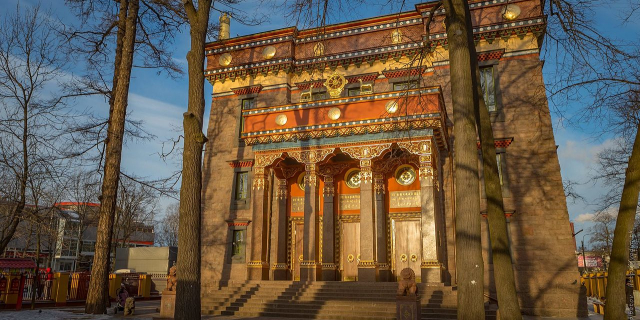Olavinlinna (also known as St. Olaf's Castle; Swedish: Olofsborg; German: Olafsburg; literally Olof's Castle) is a 15th-century three-tower castle located in Savonlinna, Finland. It is built on an island in the Kyrönsalmi strait that connects the lakes Haukivesi and Pihlajavesi. It is the northernmost medieval stone fortress still standing. The castle forms a spectacular stage for the Savonlinna Opera Festival, which was held for the first time in the summer of 1912.
 The castle has three towers remaining
The castle has three towers remaining Ground plan
Ground planThe fortress was founded by Erik Axelsson Tott in 1475 under the name Sankt Olofsborg in an effort to profit from the political turmoil following Ivan III's conquest of the Novgorod Republic. It was sited in Savonia so as to lay claim to the Russian side of the border established by the Treaty of Nöteborg.[1][2][3][4]
One of Tott's letters from 1477 includes a passing mention of foreign builders invited to Olofsborg, probably from Reval, where the city fortifications were being extended. It was the first Swedish castle provided with a set of thickset circular towers that could withstand cannon fire. It is not by accident that a network of lakes and waterways forms the setting for the castle, for these would seriously impede a prospective Russian offensive.
The three-towered keep was completed in 1485, and the construction of the outer curtain walls with two towers was initiated immediately. They were completed in 1495. The castle is roughly a truncated rhomboid with keep on the western side of the island and the curtain walls and outer bailey to east. One of the towers of the keep, St. Erik's Tower, has a bad foundation and has since collapsed. One of the towers of Bailey, the Thick Tower, exploded in the 18th century. A bastion has been built on its place. The castle was converted into a Vaubanesque fort in the late 18th century with bastions.[1]
WarfareOlofsborg withstood several sieges by the Russians during the First and Second Russian-Swedish wars. A brisk trade developed under the umbrella of the castle towards the end of the 16th century, giving birth to the town of Savonlinna, which was chartered in 1639.[1]
While the castle was never captured by force, its garrison agreed to terms of surrender twice; first to invading Russians on 28 July 1714 and the second time on 8 August 1743, with the latter conflict's peace treaty in form of the Treaty of Åbo leading to the castle and the entire region being seceded to Empress Elizabeth of Russia.[1] During the Russian era Alexander Suvorov personally inspected rearmament of the fortress.[5]
Several devastating fires destroyed much of the castle's decor in the 19th century, all of its original furnishings were destroyed.[6]
Border conflictsSwedish victory
Russian attacks repulsedTerritorialchanges Nyslott stays inside Swedish territoryBelligerents
![]() Kalmar Union
Kalmar Union
After the conclusion of the Russo Swedish War 1495-1497, Sten Sture returned to Sweden and discovered that a large revolt had begun against him, resulting in the Battle of Rotebro where he was deposed in favor of King Hans of Denmark.[7]
In August of 1499, the governor of Vyborg, Eric Bielke, received alarming reports from Nyslott. The reports tell of battles against Russian forces who believed Nyslott was rightfully Russian and were attempting to move the border posts so that it is put inside Russian territory.[8][9] Of the 1,000 Russians that took part in the fighting, only about 200 are said to have been equipped with firearms, the others fought with axes and sabers.[8] In the following battles, the Russians suffered heavy casualties and were repulsed.[10][11][9]
Further details on the battles are not know, which seem to have been limited to the area around Nyslott. On the 14th of September 1504, Eric Bielke was able to sign a truce lasting 20 years with the Russians. The next major war between Sweden and Russia would not come until 1554. However, despite this, there was no guaranteed peace on the border between them, among other things a letter from 1509 tells that "the enemies of God and Christendom, the instransigent Russians" have ravaged Finland.[8]































Add new comment